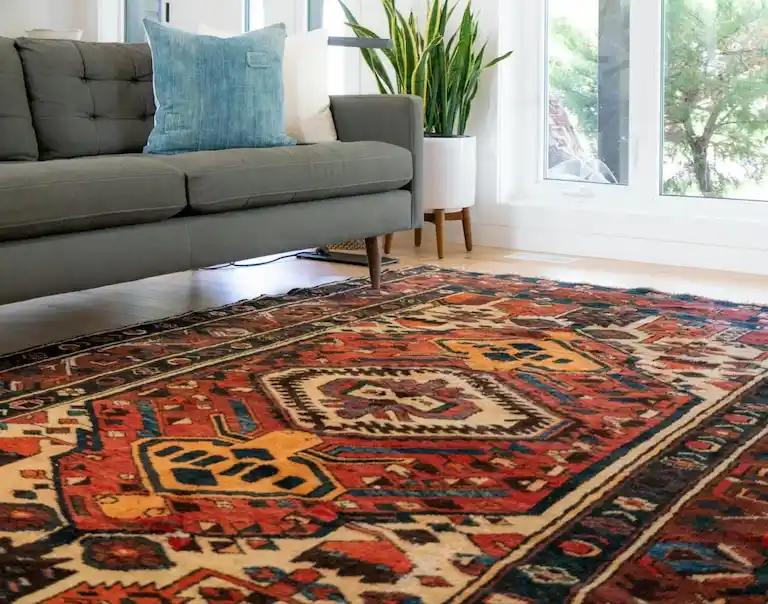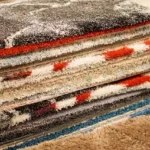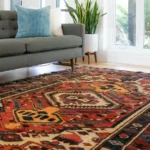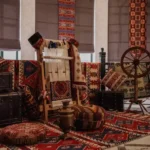Hailing from the Caucasus Mountains on the Silk Road corridor between Europe and China, uniquely styled hand-knotted Kazak rugs interweave nomadic and Persian influences through vibrant colors and patterns.
History Behind the Kazak Rug
As RugKnots shares, Kazak rug weaving traditions trace back over 500 years ago. Situated between major trade hubs, the mountainous Kazak region absorbed a rich blend of cultural designs and dyes. Local Kurdish nomadic tribes wove small sturdy sheep’s wool rugs featuring repeated geometric patterns in brilliant jewel tones to insulate their yurts. These functional carpets provided warmth and comfort through harsh winters. Their stacked, banded patterns also reflected regional topography in abstract form.
By the mid-19th century, colonial Russian occupation brought Persian design elements like curvilinear vines and palmettes to modify earlier stark Kazak styles. Rug production flourished. As Western markets developed appetite for exotic arts, richly hued Kazak carpets were exported worldwide, captivating buyers with their vibrant colors and rhythmic energy.
Categories of Kazak Rugs
Kazak carpets fall informally into three somewhat overlapping subsets:
Fine Kazaks – The highest quality with extremely dense wool and knot counts over 100/square inch. Feature emphasized main borders and jewel-toned hues.
Super Kazaks – Slightly less fine at 60-80 knots/inch yet with impressively saturated red and blue palettes.
Kazak Azari – The most nomadic with bolder primaries and touches of black for graphic pop. Knot density varies widely.
Material and Texture
Authentic Kazaks use 100% handspun high mountain wool, which feels exceptionally soft and insulating underfoot. The world’s finest Kazakh wool accepts vibrant natural dyes readily. Lower grade examples fill in with rougher Russian wool. Fuzzier textures suit tribal aesthetic over silkiness. Durability and thickness outrank suppleness.
Weaving Techniques
Traditionally woven by Kurdish men, Kazak rug construction features the symmetrical double Persian Senneh knot for durability. Patterns rarely follow written direction, just weavers’ memories. Tribal designs pass down generations but leave room for intuitive improvisation. This ensures one-of-a-kind character in every handmade carpet.
Designs and Patterns
Stylized animal horns, multi-banded arch motifs, and repeated geometric medallions typify common Kazak patterns. The “Tree of Life” symbol recurs. Tribal symbols combine with boteh plants, palmettes, and curvilinear vines borrowed from Persia. Small flaw lines known as “abrash’ enhance vibrancy. Closer inspection reveals slight deviations as assurance of their handcrafted origins and artisan nuance.
With their vibrant colors, graphic motifs, and cultural heritage, Kazak rugs have captivated decorators for over a century by blending nomadic tribal style with exotic Persian refinement into an entirely unique regional art form still popular in homes today.
Their designs weave stories as intricate as their composition. Understanding Kazak rug symbols and history unlocks deeper appreciation for the artistry underfoot.



